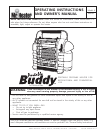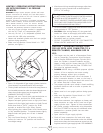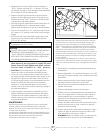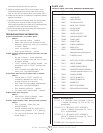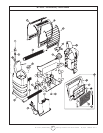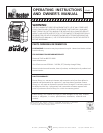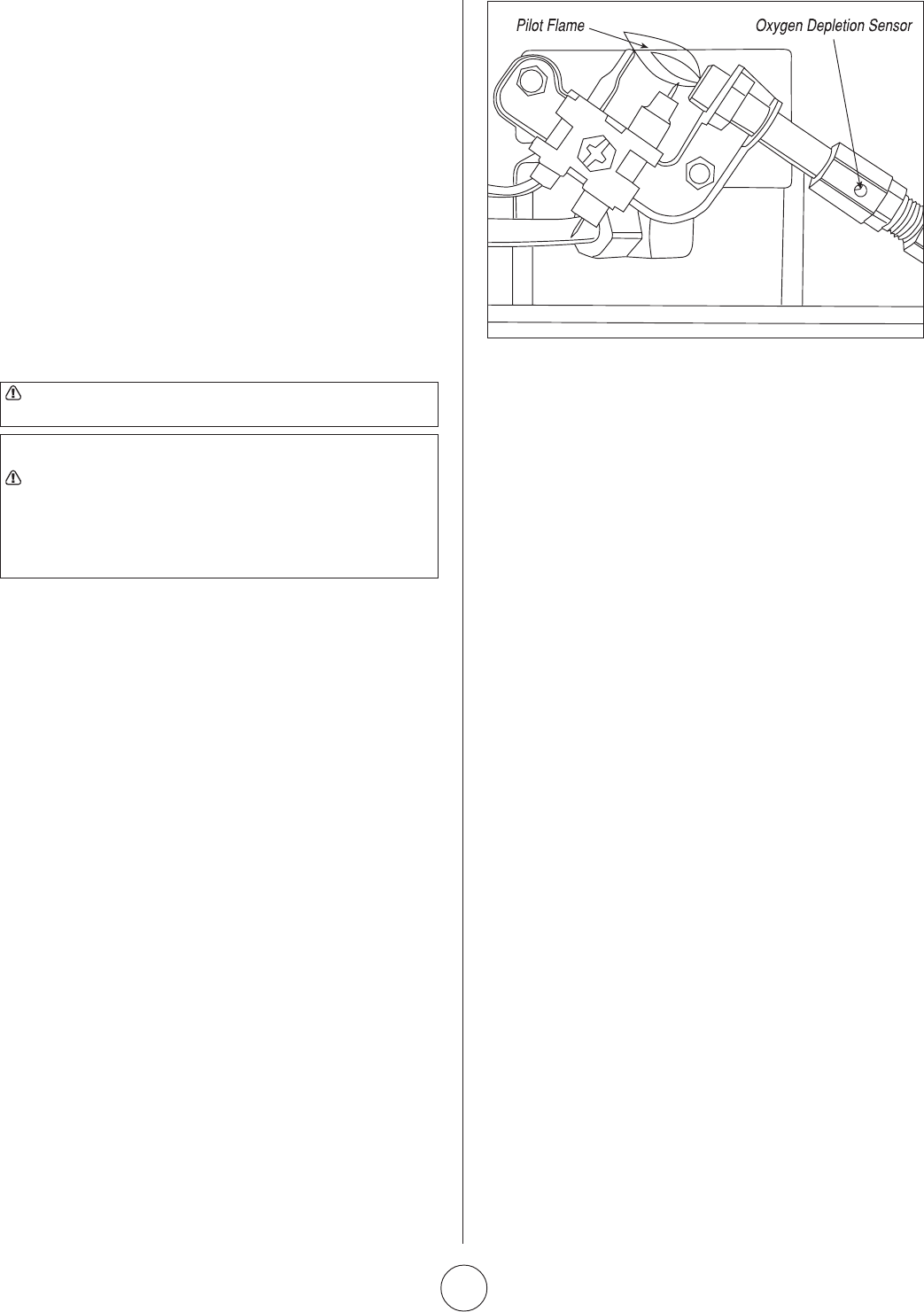
5
Operating Instructions and Owner’s ManualMr. Heater | Portable Buddy
05/12/06 73432CAL Rev. L1
• Depress and turn Control Knob counterclockwise to
“PILOT” position and hold for 1 - 2 minutes. This may
take longer to purge air from the supply hose depending
on the length of the hose being used.
• Depress red spark ignition button to light pilot flame
(repeat until pilot lights) and continue to hold Control
Knob down and at “PILOT” position for 30-60 seconds
to enable Pilot Light Safety System.
• After lighting pilot, release knob. Knob should return to
fully extended position. To operate heater slightly
depress knob and gently turn to lock in desired position.
• Fully turn Control Knob to “HI” position to light burner
tile. Leave on “HI” position until burner tile turns bright
orange.
• After burner tile has turned bright orange, adjust heat
output by turning Control Knob to desired position
(“LO” or “HI” setting).
Caution: Do not try to adjust heating levels by using
the propane tank shut off valve.
Warning:
DO NOT OPERATE HEATER UNLESS CONTROL KNOB IS
LOCKED IN A POSITION MARKED “HI”, “LO” or
“PILOT”.NEVER SET CONTROL KNOB BETWEEN LOCKED
POSITIONS. POOR COMBUSTION AND HIGHER LEVELS
OF CARBON MONOXIDE MAY RESULT.
• To shut off heater, shut off propane at supply tank,
allow heater to use-up propane in supply line until
heater shuts off, then slightly push down and turn
Control Knob clockwise to “OFF” position.
• CAUTION: After turning heater off, wire guard will
remain hot. Allow to thoroughly cool before storing.
• When not in use, the gas must be turned off at the LP-
gas supply cylinder. As stated before allow heater to use
up propane in supply line until heater shuts off. When
the LP-gas supply cylinder is not disconnected from the
heater, the heater and the cylinder must be stored
outdoors, in a well ventilated space, out of reach of
children, and must not be stored in a building, garage or
any other enclosed area.
• Indoor storage of the heater is permissible only if the
cylinder is disconnected and removed from the heater.
Cylinders must be stored outdoors out of the reach of
children and must not be stored in a building, garage or
any other enclosed area.
MAINTENANCE:
Always keep the heater area clear and free from combustible
materials, gasoline and other flammable vapors and liquids.
Keep the vent areas (slots in the bottom and the top at the front
of heater) clear at all times.
Visually inspect the pilot flame and burner periodically during use.
The pilot flame should be blue in color (not yellow) and will extend
beyond the thermocouple. The flame will surround the
thermocouple just below the tip, see Figure 2.
A slight yellow flame may occur where the pilot flame and main
burner flame meet. The burner should be bright orange (with a
slight blue color around the border, a red-orange haze that is
visible on the ceramic tile is acceptable) and without a noticeable
flame. A blue flame that rolls out at the top of the ceramic tile
indicates an accumulation of dust, lint or spider webs inside the
casing assembly and main burner assembly. If the pilot is yellow or
the burner has a noticeable flame, cleaning may be required. Use
the following procedure to inspect the casing assembly and main
burner assembly.
It is necessary to periodically check the burner orifice and burner
venturi tube to make sure they are clear of insects/nests or spider
webs that may accumulate over time. A clogged tube can lead to
a fire.
1 Allow heater to thoroughly cool before performing any
maintenance.
2 Remove disposable 1 lb. cylinder from heater or turn OFF
gas supply at remote cylinder valve, and disconnect hose
from heater.
3 Remove wire guard from front of heater by gently
bending to remove from holes in front cover.
4 Remove (1) burner assembly retaining screw from
bottom of the heater.
5 Pull burner assembly from front of the heater.
6 Inspect interior of casing assembly for accumulation of
dust, lint or spider webs. If necessary, clean interior of
casing assembly with a vacuum cleaner or apply air
pressure. Do not damage any components within casing
assembly when you are cleaning.
7 Inspect and clean main burner orifice (mounted to pilot
bracket with jam nut) by using a vacuum or apply air
pressure at orifice opening.
8 Inspect and clean pilot (mounted to bracket) by using a
vacuum or apply air pressure through the holes in the
pilot indicated by the arrows in Figure 2.
WARNING: Never use needles, wires, or similar cylindri-
cal objects to clean the pilot to avoid damaging the
Figure 2



